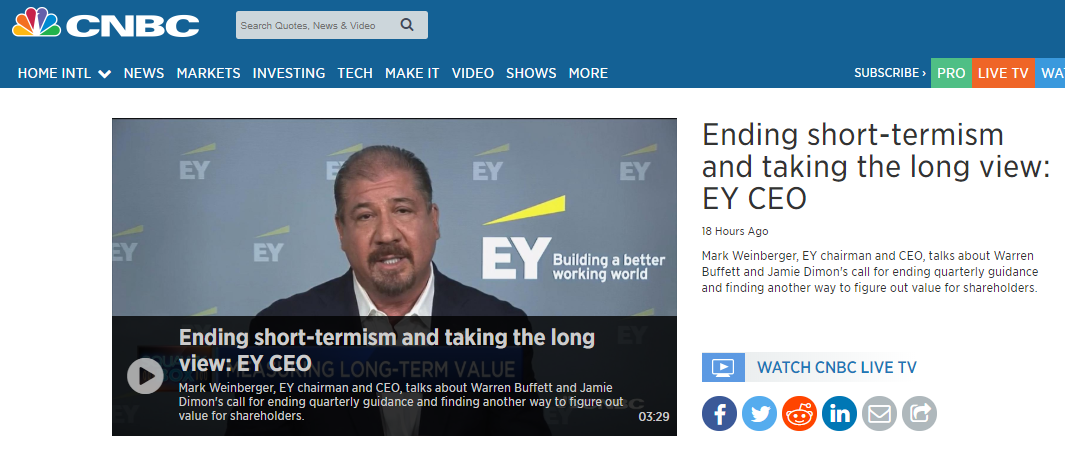You don’t know me but you do know of the Maturity Institute because we met your emissary at a meeting held by the Coalition for Inclusive Capitalism. She informed us that you wanted to know more about us. So, having just viewed your video yesterday, I would like to provide some clear and simple answers to all of the issues you raise.
In MI’s ‘Big 4’ Report, for which we used our OMINDEX to rate EY, you achieved an OMR (organizational maurity rating) of BB. This is equivalent to our default rating and indicates that you only manage your human capital as well as most of your competitors. That probably isn’t what you wanted to hear, especially publicly, but when you get over your immediate reaction to this news you will begin to realise that, when it comes to maturity, it is all upside from here onwards.
BB is a low score (44.07% in EY’s case) but a maturity analyst does not regard it as ‘good’ or ‘bad’. It’s just your baseline for improvement. What matters to MI is how you respond to this news; the fact that you wanted to find out more is a very good sign. None of your Big 4 competitors have made any effort to get to know us. So you have already gained a competitive advantage.
Now to the specifics of the video. Your interviewer said that you and he had had this discussion (short-term versus long-term capitalism) “many times before”. This is why you know this subject so well – that comes across very clearly. What you don’t have is any clear answers; you are still at the questioning stage and so is your interviewer. What you need is a framework if you are to break out of this vicious circle and make significant progress. If you haven’t been able to develop a well-conceived, strategic framework at the Embankment Project then we would suggest you use ours. Here are some of the lessons awaiting you.
Short-term quarterly guidance, as you openly admit, does not “reflect the value of a company”. You remark that “In the 1970s 85% of value was on the balance sheet. Today it is less than 20%.” We know what you mean. In the 70s, when basic accounting conventions were limited to tangible assets, so much was missed, and companies were valued accordingly; that is, very inaccurately. They were missing a huge amount of value on the balance sheet, not just 15%. Most of it was under-utilisation of human capital. Things will only change when EY learns how to put a value on this. At MI we know how to do that – but I have to admit, this is the culmination of many years of thinking, research and collaborative development.
You refer to ‘financial and non-financial’ measures and want “a better way to value a company against risk and value”. At MI we regard the ‘financial versus non-financial’ viewpoint as a false dichotomy. Everything anyone does in any organization can be linked to value and risk. Moreover, we have developed an instrument called the ‘OM30′, the core questions you need to ask yourself, which takes a whole system view to show all of the connections between behaviours, value and risk. This is the instrument we used to rate EY. It is the best way “to measure value for the longer term”. As you rightly suggest, OMINDEX is exactly the sort of information on which “asset managers and owners” should base their investment decisions; some already are.
Finally, every CEO and every organization are already somewhere along the OMINDEX continuum. You now know your position and that has to be better than not knowing. We will be monitoring your progress, assuming you begin the journey towards higher levels of maturity, and we are here to help you. For MI, it is not a case of good or bad, just maturity: but that has to be a long-term strategy.
Yours sincerely
Paul Kearns, Chair

Comments are closed